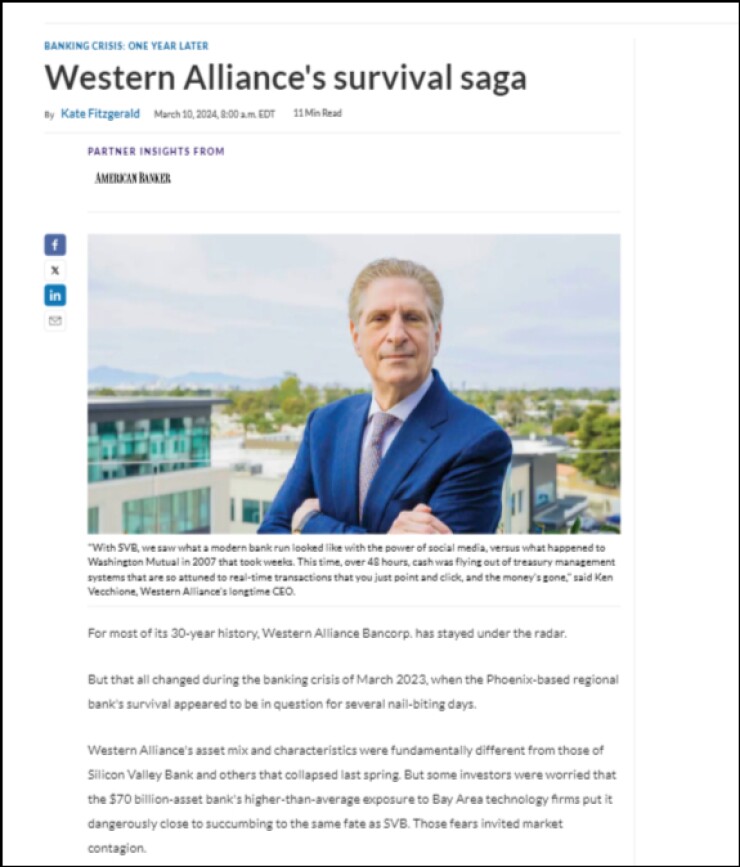
For 30 years, Western Alliance Bancorp. quietly thrived, but the banking crisis of March 2023 thrust it into the spotlight. As Silicon Valley Bank collapsed, fears spread that Western Alliance, with its significant tech exposure, might be next. This led to a rapid outflow of funds and a plummeting stock price. In a dramatic few days, the bank's leadership stabilized the situation with quick, decisive actions. Despite initial losses, Western Alliance bounced back swiftly, showcasing resilience and adaptability. Discover how this Phoenix-based bank emerged stronger from the crisis.
